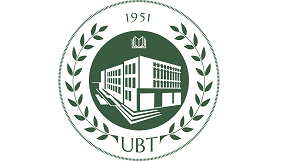RIGERS BAKIU1*
|
1 Departament of Aquaculture and Fisheries, Faculty of Agriculture and Environment, Agricultural University of Tirana, Koder- Kamez, Abstract Climate change has triggered heterogenous pattern of changes in abundance, survival, growth, reproduction phelogeny and distribution of different aquatic communities. The Mediterranean Sea has been identified as one of the most vulnerable regions, and it is expected to become warmer and drier with an increase in inter‐annual variability due to extreme heat and drought events. In this paper, the general aim is to analyse the expected climate change effects on the abundance and fisheries catch of two invertebrate representatives: European common cuttlefish (Sepia officinalis) and brown shrimp (Crangon crangon). The ecological productivity and the fisheries catches of these two speces were estimated using the dataset available at the Copernicus EU database. The model used Size Spectra – Dynamic Bioclimate Envelope Model takes into account the impact of environmental changes and human activities to determine biomass and distribution of these species in response to environmental changes. In order to assess the impact of climate change, the status of common cuttlefish and brown shrimp stocks was defined under two climate scenarios based on different Representative Concentration Pathway. The effects of climate change (sea surface temperature increase) and fishing management measures are shown to affect differently on each species abundance and fisheries catch. Proper adaptation and mitigation measures should be applied in order to minimize the effects of climate change on these fishing resources. Keywords: Climate Change; common cuttlefish; brown shrimp; adaptation measures; mitigation measures. |
